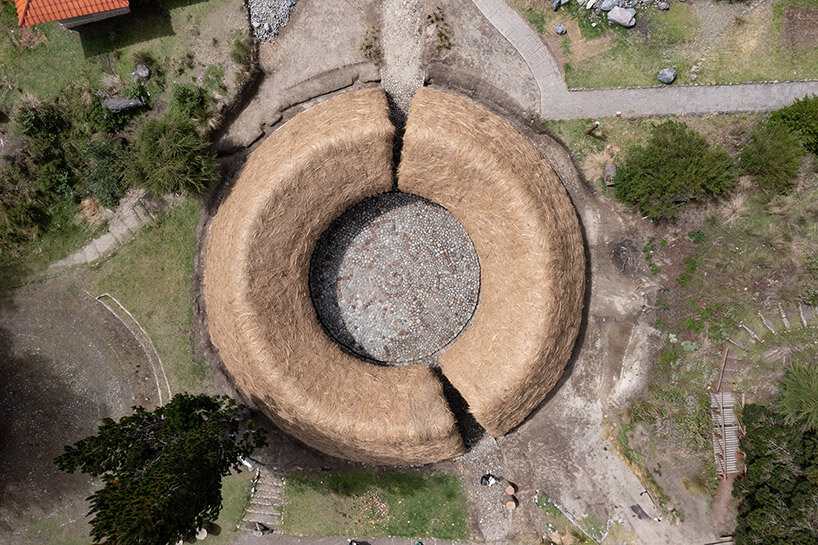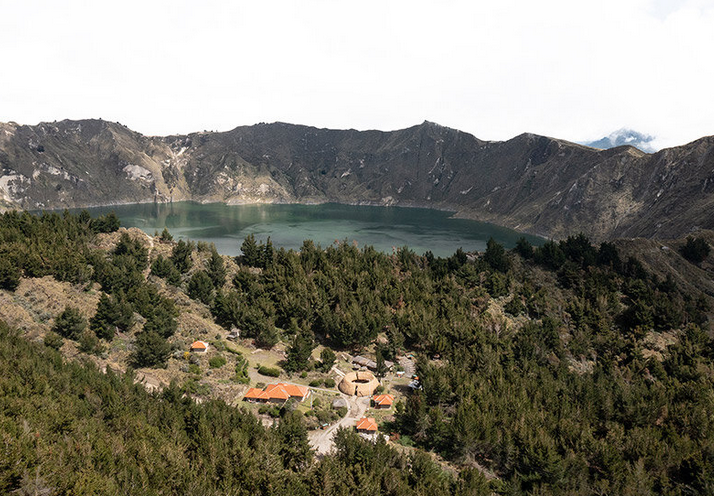 Along a volcanic crater in Ecuador, the town of Shalalá is committed to living in symbiosis with the environment, which extends to its architectural endeavors. A new project for the town, known as the Chaki Wasi handicrafts center, has been designed to exemplify the spirit of the place and its cultural heritage.
Along a volcanic crater in Ecuador, the town of Shalalá is committed to living in symbiosis with the environment, which extends to its architectural endeavors. A new project for the town, known as the Chaki Wasi handicrafts center, has been designed to exemplify the spirit of the place and its cultural heritage.
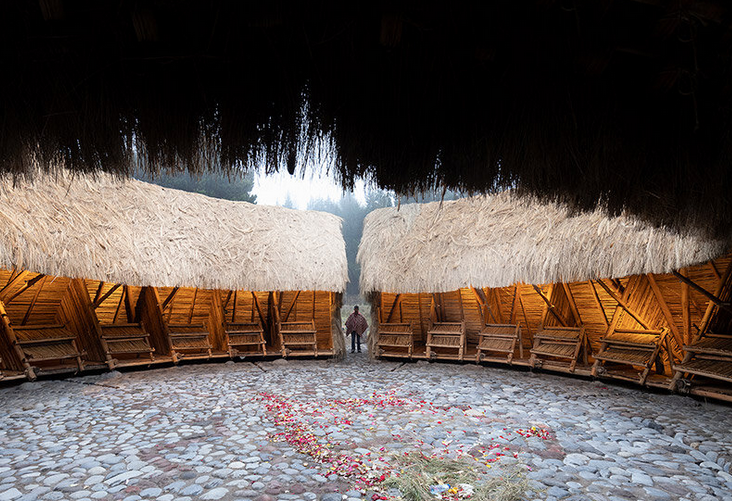 Chaki Wasi, meaning ‘a house made of straw from floor to roof,‘ represents Andean culture through traditional building techniques. The architects favored vernacular methods to create a timber and fiber structure that resonates with the past while catering to the present needs of the Shalalá community.
Chaki Wasi, meaning ‘a house made of straw from floor to roof,‘ represents Andean culture through traditional building techniques. The architects favored vernacular methods to create a timber and fiber structure that resonates with the past while catering to the present needs of the Shalalá community.
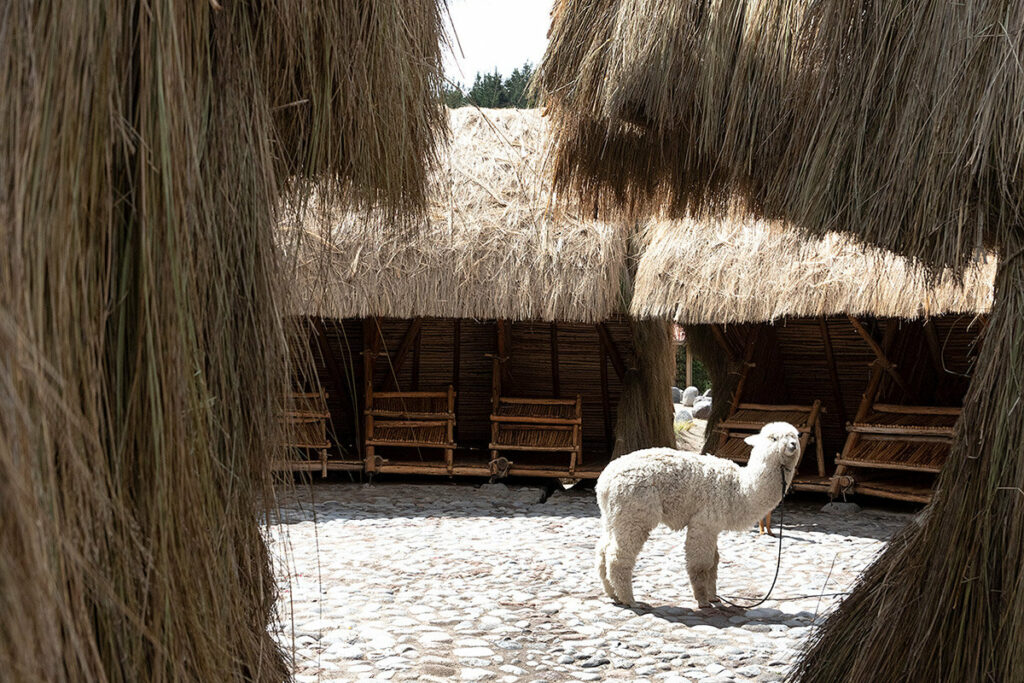 The foundation rests firmly on river stones, which symbolize the resilience of the land. Eucalyptus wood forms the skeleton, bound together with cabuya, a natural fiber derived from the penco plant.
The foundation rests firmly on river stones, which symbolize the resilience of the land. Eucalyptus wood forms the skeleton, bound together with cabuya, a natural fiber derived from the penco plant.
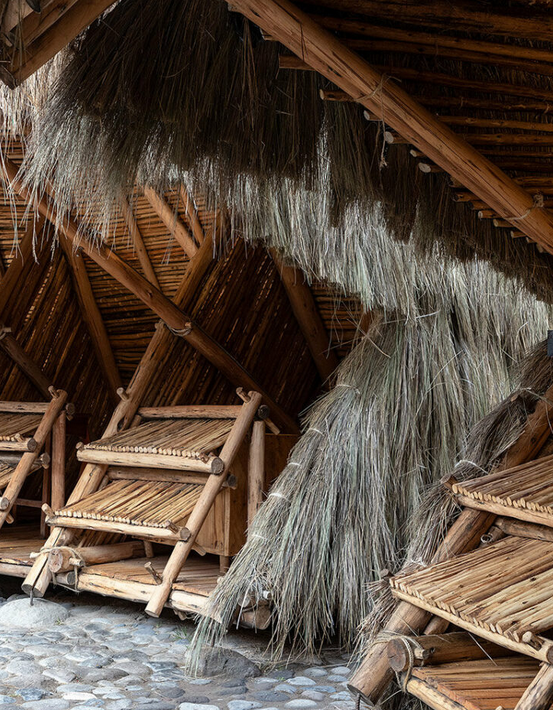 Large dowels, crafted from young eucalyptus, provide additional support. The construction relies solely on traditional tools. The entire structure is topped by an expansive thatched roof.
Large dowels, crafted from young eucalyptus, provide additional support. The construction relies solely on traditional tools. The entire structure is topped by an expansive thatched roof.
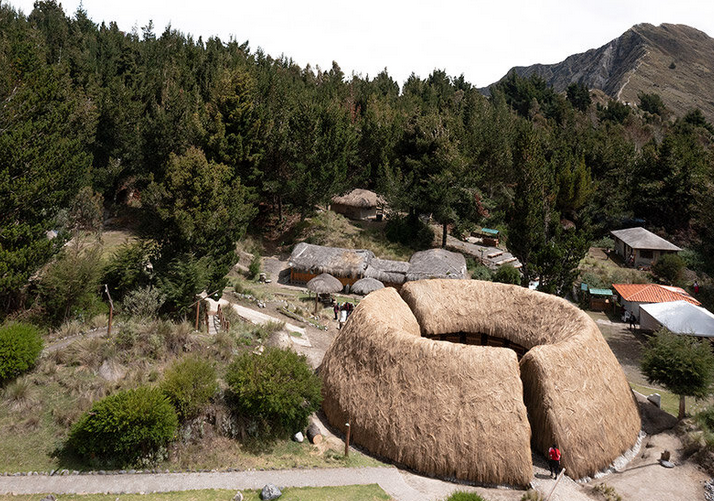 The project champions the concept of regenerative design. Waste is returned to the land, promoting a closed-loop system in harmony with nature. By embracing these principles, the Shalalá community ensures a positive carbon footprint, leaving a legacy for future generations.
The project champions the concept of regenerative design. Waste is returned to the land, promoting a closed-loop system in harmony with nature. By embracing these principles, the Shalalá community ensures a positive carbon footprint, leaving a legacy for future generations.
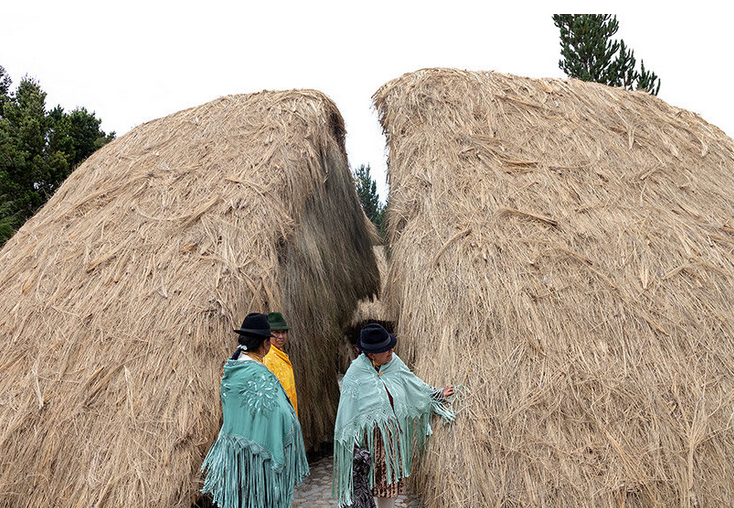 The project thrives on a strong sense of community, as leadership roles rotated weekly to lend a sense of shared ownership. Traditional communal work parties brought together women, men, and young people. Wood and straw were procured through collaboration with neighboring communities, which solidified the social fabric of the region.
The project thrives on a strong sense of community, as leadership roles rotated weekly to lend a sense of shared ownership. Traditional communal work parties brought together women, men, and young people. Wood and straw were procured through collaboration with neighboring communities, which solidified the social fabric of the region.
 The entire structure was built by hand, relying on simple tools and collective strength. Ropes and a spirit of unity were instrumental in raising the structural modules. The laying of the thatch became a celebration of ancestral knowledge, each stage marked by rituals and customs that honor the Andean way of life.
The entire structure was built by hand, relying on simple tools and collective strength. Ropes and a spirit of unity were instrumental in raising the structural modules. The laying of the thatch became a celebration of ancestral knowledge, each stage marked by rituals and customs that honor the Andean way of life.
You can watch a video about this at www.youtube.com
You can read the original article at www.designboom.com

